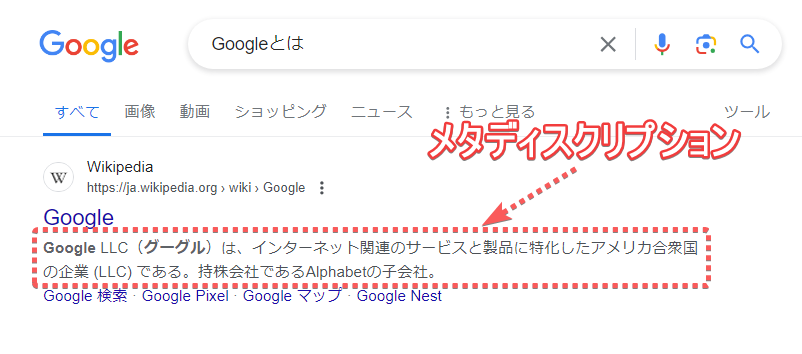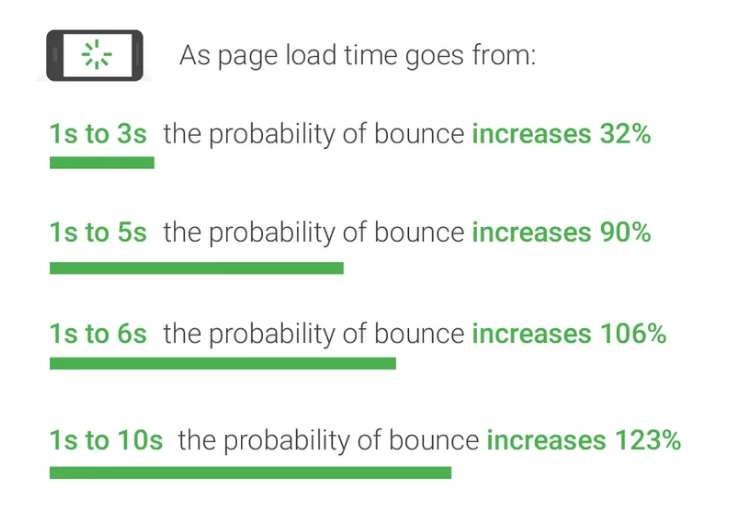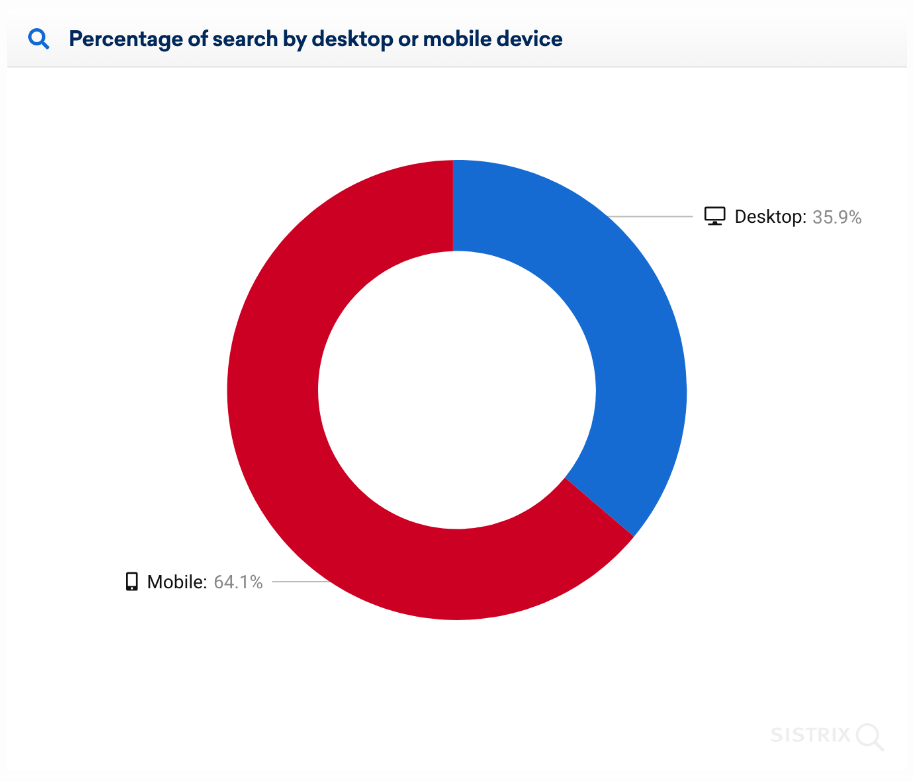As a web marketing strategy, SEO (Search Engine Optimization) is commonly used to attract site traffic. While SEO is considered a cost-effective method, some argue that “SEO is meaningless.” Although SEO is excellent for continuous user attraction, ineffective strategies can yield no results and may even decrease your website’s ranking and user inflow.
When implementing SEO, it is crucial to avoid meaningless strategies and focus on effective ones.
This article explains why some believe “SEO is meaningless,” identifies ineffective SEO strategies, and discusses effective SEO techniques.
- Web site and web service planners
- Those who have implemented SEO strategies but did not see results
- Individuals seeking to learn proper SEO techniques
- Examples of ineffective SEO strategies
- Effective SEO methods that can yield results
- Criteria to assess the current state of your SEO strategies
Reasons Why SEO Measures Are Considered Ineffective
While SEO is known for its cost-effectiveness in driving results, it’s not uncommon for companies to create their own sites without seeing the desired outcomes. Implementing SEO measures that fail to deliver results can be a waste of effort. As a result, many consider SEO to be ineffective due to the following reasons:
- Implementing measures that do not increase traffic.
- Failing to convert traffic into sales.
- Algorithm changes causing ranking fluctuations.
Measures That Do Not Increase Traffic
One reason SEO is considered ineffective is when the measures implemented do not lead to increased traffic. Despite significant effort in creating content, if it does not rank high on search engines, increasing traffic is challenging. Thus, the effort and costs involved in creating articles often do not match the expected user inflow.
Reasons for not increasing traffic include insufficient article structure and content. To rank high on search engines, it is essential to provide content that meets the needs of the search keywords. If the information users seek is not provided, it becomes challenging to achieve high search rankings.
Traffic Does Not Translate to Sales
Even if SEO measures achieve high search rankings, if they do not lead to sales, they may be considered ineffective. Increasing traffic without promoting company products effectively diminishes the impact.
Reasons for this include incorrect keyword selection and lack of conversion rate (CVR) optimization. For example, creating content around recipes using a frying pan when the goal is to sell frying pans leads to visits from users who already own frying pans, making it difficult to promote the product.
Choosing keywords that target potential buyers and setting up internal links from ranking articles to promotional content are essential for increasing sales.
- Selecting keywords that relate to the product and target audience.
- Creating content that meets search needs.
- Setting up conversion paths.
Algorithm Changes Cause Ranking Fluctuations
SEO is often considered ineffective due to ranking fluctuations caused by algorithm changes. Search engines like Google periodically change their algorithms, altering the criteria for site evaluations, which can cause previously high-ranking content to drop out of rankings.
Technical SEO measures, such as external links and site improvements, are particularly susceptible to these changes. Even with a focus on content SEO and excellent article creation, a single algorithm change can result in a drastic drop in traffic.
Non-experts often find it challenging to keep up with these changes, leading to wasted efforts on content that becomes irrelevant, reinforcing the belief that SEO measures are futile.
Examples and Explanations of Ineffective SEO Strategies
While there is no single “correct” way to implement SEO, there are many strategies considered ineffective today. Techniques that once worked can become obsolete due to updates in search algorithms.
As of 2024, here are specific examples of SEO strategies that are no longer effective:
- Unnecessarily Long Content
- Overstuffing Keywords in the Main Text
- Setting Keywords in Meta Tags
- Backlinks from Self-Created Sites
- Mass-Producing Content with Minor Changes to Locations or Product Names
Below, we will explain these ineffective SEO strategies and their specific content. These strategies not only yield poor results but can also lead to penalties. It is crucial to review whether your company is using similar ineffective tactics.
Some of these strategies violate Google’s guidelines, which could result in your site being removed from search results. We recommend revisiting Google’s “Search Quality Evaluator Guidelines” to understand what types of pages are highly rated by Google.
Penalties can significantly lower your search rankings. Google’s penalties can be automatic or manual, and low-quality content or SEO strategies solely focused on ranking can be counterproductive.
Unnecessarily Long Content
From 2015 to 2017, there was a trend in content SEO to create excessively long articles filled with SEO keywords, which were highly rated at the time. Articles with even the slightest relevance to keywords were crammed with information.
Today, however, unnecessarily long content is not valued at all. Such content can actually lower the overall evaluation of your site as low-quality content.
Recently, short, clear, and highly relevant content is preferred. Content that is comprehensive and easy to read is rated higher.
Setting a word count target, such as “articles must be at least XX words,” focuses on quantity over quality.
Adding irrelevant information just to increase word count is meaningless. When analyzing competitor sites, focus on the amount of valuable information they include, not just text length.
Be aware that there is a significant difference between “content aimed at length” and “content that is long because it contains a lot of valuable information.”
Overstuffing Keywords in the Main Text
One ineffective SEO strategy involves overstuffing keywords in the main text to gain higher search rankings. Previously, the frequency of keywords, such as “using the target keyword more than XX times,” was a factor in search site evaluation.
However, with a current focus on content quality, keyword stuffing has become an ineffective SEO strategy. Articles that provide the information users seek, including their latent needs, are now more highly valued.
Using co-occurrence words excessively, or inserting keywords into the page text using the same color as the background so users cannot see them.
Today, keywords are primarily used to find relevance. Search rankings emphasize “content richness” and “site expertise.”
The basic approach is to use one keyword per content piece and focus on whether the page contains answers to queries. For example, if you want to rank high for “cat,” consider creating variations like “how to care for cats,” “cat breeds,” or “cat training.”
Setting Keywords in Meta Tags
Meta tags refer to settings related to keywords or descriptions for the page. Previously, setting keywords relevant to the page content was a standard SEO practice.
While meta keyword settings still exist in website creation, Google no longer considers meta keywords. As a result, filling meta tags with keywords is now ineffective.
Filling meta tags or meta descriptions with relevant words or co-occurrence words.
However, setting a meta description is not entirely ineffective for user-focused SEO. Creating attractive, click-worthy descriptions that delve into user needs is still a meaningful SEO strategy.

Description content is displayed in search results with approximately 80 characters, so inserting phrases that attract user interest can increase click-through rates.
Self-Created Sites for Backlinks
Creating multiple sites to link to the main site in an attempt to boost its evaluation is another ineffective SEO strategy.
While “acquiring high-quality backlinks” remains effective for SEO, randomly placing low-value links can lead to penalties from Google.
Links from valuable sites or high-quality backlinks are still effective SEO strategies. However, links from self-created, low-value sites will not improve the overall ranking of the site.
“Linking to a beauty media site from unrelated travel or finance sites” or “operating unrelated sites by borrowing subdirectories of high-authority domains.”
In the past, “negative SEO” tactics involved linking from unfavorable content to intentionally lower competitors’ rankings.
Spam site backlinks negatively impacted content, requiring providers of high-quality content to frequently disavow clearly low-quality backlinks.
Recently, Google has implemented mechanisms to automatically invalidate links from low-quality content. There is no need to disavow such links manually, rendering black hat SEO strategies involving worthless links ineffective.
Although different from backlinks, using “subdirectory leasing” by borrowing a domain and operating pages under it also falls into this category. This strategy misuses the high reputation of the domain owner to operate unrelated websites, exploiting Google’s evaluation. However, as of May 5, 2024, such misuse of subdirectory leasing falls under manual penalties as “misuse of site reputation.”
Mass-Producing Content with Minor Changes to Locations or Product Names
Mass-producing content by only changing parts like location or product names is also an ineffective SEO strategy. Content with largely the same material is treated as “duplicate content,” potentially leading to penalties even within the same site.
If most of the content is identical, it could significantly lower the domain’s evaluation as a spam site. While “quantity of content” was emphasized in the past, now “quality of content” is paramount.
Mass-producing similar content is pointless, so it’s necessary to create in-depth articles for each keyword.
An e-commerce site that handles products with many size or color variations, creating multiple pages with identical content, only changing location or product names.
Mass-produced content is considered low-quality, lacking originality.
Creating multiple articles for specific keywords can enhance the site’s expertise. However, each piece must maintain high quality, focusing on “meeting user search needs” from the user’s perspective.
Effective SEO Strategies
Effective SEO strategies can still yield significant results. If your SEO efforts have not produced the desired outcomes, it’s essential to review whether the following points have been addressed:
- Creating unique content that meets user needs
- Improving page loading speed
- Implementing proper internal links
- Ensuring mobile-friendliness
- Enhancing E-E-A-T (Experience, Expertise, Authoritativeness, Trustworthiness)
Below, we explain these effective SEO strategies with specific examples.
Creating Unique Content That Meets User Needs
The foundation of SEO is to create content that meets “user needs.” For example, when you search for “SEO,” you can view the top articles. These top articles are high-quality sites that meet user needs and are highly rated by Google, so refer to them when creating content.
- Meaning of SEO
- Basics of SEO strategies
- Common SEO mistakes to avoid
- Advantages and disadvantages of SEO strategies
The elements listed above are typically included in top-ranking articles for the “SEO” keyword. It’s evident that the quality of content is prioritized, covering not only the keyword itself but also the surrounding knowledge comprehensively.
In addition to covering these elements, creating original content with unique writing can yield significant results as an SEO strategy. Since duplicate content can lead to penalties, it’s essential to avoid copy-pasting as much as possible.
To determine what kind of content is likely to be highly rated, start by checking the top-ranking articles for your target keywords and thoroughly explore user needs.
Improving Page Loading Speed
Improving page loading speed can have a significant impact on SEO. Page loading speed refers to the time it takes for the entire page to display after accessing it.
Pages with abundant images and elaborate decorations can take longer to download, leading to higher reader abandonment rates.

Source: Think with Google “benchmarks for mobile page speed“
In a 2017 Google study, it was found that “bounce rates increase by 32% between 1-3 seconds,” “90% between 1-5 seconds,” and “106% between 1-6 seconds.” As page load times increase, user bounce rates also significantly rise.
No matter how high your search ranking is, if your page loading speed is slow, users will leave immediately, negatively impacting your search ranking. Therefore, improving loading speed is a highly valuable SEO strategy. You can check your loading speed score using tools like Google’s “PageSpeed Insights.”
- Optimize image and video file sizes embedded in the site
- Switch to a higher-performance server environment
- Use browser caching to improve loading speed
- Remove render-blocking JavaScript
- Implement lazy loading
Appropriate Internal Link Placement
Placing appropriate internal links can encourage user navigation through your site and improve crawlability, making it easier for search engines to index your content. Internal links connect different pages within your site.
Optimizing your internal link structure is a fundamental SEO tactic. A clear site structure enhances Google’s evaluation, boosting SEO effectiveness.
Recently, the “topic cluster” content creation method has gained attention. Topic clusters connect related content from scattered articles, enhancing the overall evaluation of the article group. By linking smaller themed articles around a main article, you can elevate the main content’s evaluation and aim for higher rankings with broad keywords that attract many users.
- Feature the latest information (recently published web pages) on the top page or sidebar
- Use category lists and tags to make it easy to navigate to related pages
- Include breadcrumb lists so users can see where they are on the site
- Provide transition links to useful content from highly relevant content
Mobile Optimization
In recent SEO strategies, “mobile-first” optimization is crucial, ensuring that your site is optimized for smartphone viewing.
Google’s search engine has adopted mobile-first indexing, prioritizing the evaluation of smartphone sites. Tools like “PageSpeed Insights” now include “mobile” evaluation criteria.
This shift is due to the reversal in the ratio of “desktop PC searches” to “mobile searches.”

Source: SISTRIX “The proportion of mobile searches is more than you think“
According to a 2020 survey by the German company SISTRIX, two-thirds of all search queries are already made on mobile devices.
Furthermore, focusing on Japan, “Mobile 75.1%” and “Desktop 24.9%” show that roughly three-quarters of searches are conducted on mobile devices.
If you neglect to optimize for mobile displays, you may overlook issues such as display alignment or readability, leading to user attrition.
Thus, ensuring a seamless and stress-free mobile viewing experience has become essential for effective SEO strategies.
- Check mobile metrics from Search Console > Page Experience
- Ensure the site design is responsive
- Optimize for mobile data by reducing file sizes
- Break text into 80-120 character lines
- Check the design on Google Chrome’s mobile view
Windows: [Ctrl] + [Shift] + [I] or [F12]
macOS: [option] + [command] + [I]
Enhancing E-E-A-T
Recent SEO strategies emphasize “Experience,” “Expertise,” “Authoritativeness,” and “Trustworthiness” (E-E-A-T).
E-E-A-T is mentioned in Google’s Search Quality Evaluator Guidelines and serves as a standard for evaluating websites. Improving site quality with E-E-A-T considerations can enhance the effectiveness of SEO strategies.
To enhance E-E-A-T, involve experts or authoritative figures in your content creation.
Reliable content from recognized authorities, with actual product photos and detailed experiences, builds user trust and improves search engine evaluation.
- Display experts or supervisors in your content
- Create unique research data to increase authority
- Use actual experiences and original images in articles
- Develop specialized content to boost the site’s overall expertise
Criteria to Determine Whether SEO Measures Are Effective
Despite implementing SEO measures, it is not uncommon to struggle with questions like “Why isn’t my traffic increasing as expected?” or “Is this really working?” Before concluding that your SEO efforts are ineffective, it is advisable to perform a self-check based on the following criteria.
The criteria to determine whether SEO measures are effective include:
- Is the search ranking improving?
- Are impressions and traffic increasing?
- Is there an increase in inquiries or sales?
Here, we will explain the criteria for determining whether your SEO measures are effective.
Is the Search Ranking Improving?
The effectiveness of SEO measures is reflected in search rankings, making it the primary criterion for evaluation. However, the impact of SEO measures is not immediate. The time required to see results varies depending on the keywords, content, and competition. Generally, it is advisable to check after about 2-3 months. If the search ranking improves over time, it indicates that you are creating content that is valued by Google. On the other hand, if the ranking drops or remains unchanged, it suggests there is room for improvement. Revisit the content to ensure it meets user intent and consider rewriting or improving it.
Are Impressions and Traffic Increasing?
The effectiveness of SEO measures can be checked by the increase or decrease in impressions and traffic. It is crucial to verify if there is organic traffic coming from natural searches. Tools for analyzing impressions and traffic include:
- Google Analytics
- Search Console
- Rank tracking tools
- ahrefs, etc.
Implement these tools when launching your site and monitor whether the traffic increases over time to visualize the effectiveness of SEO measures.
Is There an Increase in Inquiries or Sales?
One reason SEO measures are considered ineffective is the lack of conversions. Especially for “Know queries” that are less likely to lead to purchases, eye-catching buttons and design elements are essential for conversions. The average CVR (conversion rate) from SEO is 2-5%, so if your figures fall outside this range, you should review your lead and design elements. Regardless of how much you enhance your content, without proper conversion paths, you cannot expect an improvement in conversion rates. Regularly review whether your SEO-optimized site leads to an increase in inquiries and sales.
Points to Avoid Ineffective SEO Strategies
If you engage in ineffective SEO strategies, you will waste time, money, and resources. To avoid the frustration of “having invested in SEO but seeing no results,” it is recommended to focus on the following three points:
- Clarify your goals and objectives before starting
- Regularly check your results
- Scrutinize the services provided by professional agencies
Here, we will explain the points to avoid ineffective SEO strategies.
Clarify Your Goals and Objectives Before Starting
When implementing SEO strategies, it is crucial to have clear and specific goals and objectives.
For example, whether you want to increase site traffic or boost inquiries for your products will significantly influence the keywords you should target and the SEO strategies you should implement.
In extreme cases, if your goal is to “increase the number of inquiries,” you don’t necessarily need to rank high for broad keywords. Even with lower search volume, creating content around long-tail keywords that match your product needs can help you achieve high rankings sooner.
Thinking of SEO as merely achieving the top spot for broad keywords can lead to excessive costs, so it’s essential to align your strategies with your specific goals and objectives.
Regularly Check Your Results
One significant advantage of SEO is that once you gain organic traffic, you can attract stable users over the long term. However, this does not guarantee permanent results.
Google algorithm updates or competitors’ strategies can lower your rankings, or new keywords from different perspectives may gain attention.
Therefore, regularly check your site’s performance after implementing SEO strategies. Analyze and rewrite content to better meet user needs if you notice a decline in traffic or a drop in rankings, creating opportunities for re-evaluation.
Scrutinize the Services Provided by Professional Agencies
Due to frequent algorithm changes, it is challenging to keep up with SEO information alone. Therefore, consider outsourcing to SEO professionals when necessary.
When outsourcing SEO, scrutinize the services provided by various agencies. Clearly understanding the support you will receive can help you avoid wasting money on ineffective strategies.
Choosing agencies that align with your predefined goals and objectives is also essential. To find the right service among many agencies, consider their recent achievements and strengths to determine if they will benefit you.
Summary
SEO strategies are not about just implementing them; ineffective SEO can waste costs and even lower your ranking.
Moreover, since SEO strategies are means to achieve the final goal, it is crucial to clarify what your company aims to improve.
At MASSDRIVER, we specialize in SEO strategies that reach final objectives, leveraging extensive experience to identify unique differentiation points from a web marketing perspective. If you are interested, please contact us for a consultation.





